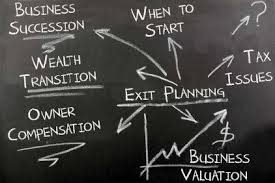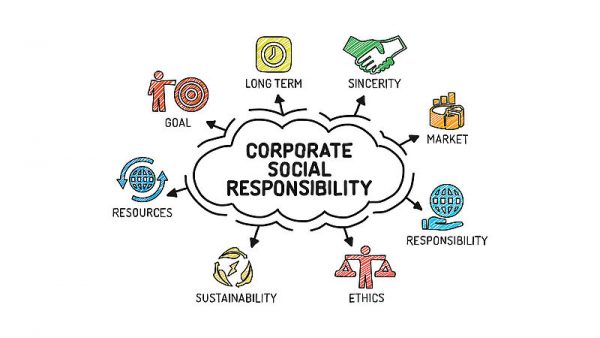Valuing a Business in the Time of COVID-19
 Business owners and investors alike are asking themselves the same questions in the current COVID-19 environment. Are there opportunities in downturns? If so, when do you know when buy and sell? What are my illiquid assets worth?
Business owners and investors alike are asking themselves the same questions in the current COVID-19 environment. Are there opportunities in downturns? If so, when do you know when buy and sell? What are my illiquid assets worth?
A former boss and one of the best bond traders I’ve ever met frequently used a popular trader’s phrase that predicting when a market will bottom and turn is “like trying to catch a falling knife.” A recent article revisited this phrase in the context of today’s market and the human decision-making process. As the article suggests, the big takeaway from Nobel Prize-winning psychologist Daniel Kahneman’s book Think, Fast and Slow is that “in critical situations that rapidly unfold…we tend to rely on our intuitions.” However, Kahneman suggests that when we are losing money fast, “we’d be better off…by slowing down and taking the time to analyze not only the market situation unfolding but our response to it.”
Responding to Market Data
In publicly traded markets, there is no short supply of data to analyze in determining a proper response. Volatile markets generate gigabits of trading data that money managers, traders and research analysts can tap into to assess markets and responses in the form of buy/hold/sell recommendations. But what about small private companies? With data limited to their own operating metrics and year over year change, how can an owner operator analyze the market situation and how to respond to it. Following Kahneman’s advice we suggest you slow down and analyze before acting.
A Private Company Response
The most prevalent approach to value is capitalizing current or discounting forecasted cash flows. This approach is based on three key inputs;
- Cash Flows – or the benefit stream to a business owner.
- Growth – or the rate at which these cash flows are expected to grow or decline.
- Risk – or the impact outside forces have on receiving these benefits over time.
These three inputs have different relationships. All other inputs being equal, the increase in cash flows increases value. The same is true for growth. Risk has an inverse relationship to value as the increase in risk lowers value. So as an owner operator or business manager, a quick assessment of the impact of this market on value depends on the flow of these three inputs. If you are lucky enough to benefit from the demand of essential products in this market, both cash flows and growth (at least in the short-term) are likely up. Some if not most of that increase in value is offset by an increase in risk as the world ponders a strange question of when to “reopen” its economies.
The Next Layer of the Onion
A quick assessment by the seasoned owner or manager is the difference between growth and stagnation, deep losses versus breakeven and, ultimately, success and failure. These quick assessments are needed every day as these three key inputs constantly update. As valuation experts, Exit Strategies Group also believes that there is “value” in a formal valuation of a business at a specific date. The value of this formal approach increases in chaotic times and a deep dive of a business by an independent, third-party appraiser at a relative low in a company’s valuation history has many benefits. The most important of these benefits is an answer to the question, “what is my business worth today in is COVID-19 market.”
Unique Valuation Opportunities and Needs
We believe that in addition to answering this question, a formal business valuation (either a full or limited scope analysis and report) exposes unforeseen or unnoticed risks and conversely “nuggets of value” in the form of intangible assets that fuel the business and its growth. But this deliverable of an opinion of value of 100% or 1.0% has additional and unique uses amid this COVID-19 crisis;
- Gifting – Down markets give owner operators and investors a unique opportunity to pass value to the next generation or your favorite charity at a low price that limits the use of a lifetime gift tax exemption and maximizes the benefits of estate planning.
- Option Plans – The IRS in its IRC 409A statute requires that a valuation of equity securities used to price options be updated every year or when there is a “material change” in the business. Usually, for venture backed companies, this material change within the one year window is a new financing round. However, in times of market downturns, there is a unique opportunity to price new options or reprice existing options at a lower price. For companies that rely on this stock-based compensation to woo new hires, this opportunity allows these companies to reset the price and restart the clock for another year.
- Exit Strategies – In our conversations with owner operators in this market that had plans to sell the business before COVID-19, we have sensed both frustration and acceptance of the fact that either retirement just got pushed off a few more years or the quality of that immediate retirement has taken a hit with an expected decline in the selling price. A current valuation will help you decide whether to proceed with a sale or stay the course. For those who want to maximize exit value in the next 2-5 years, now is the time to identify key risks to mitigate and “nuggets of value” to invest in.
- Bankruptcy – A recent blog on our site talks about valuing a business in bankruptcy. An assessment of the value of your business may suggest that it is time to take advantage of Bankruptcy Code of the US and reorganize your company and renegotiate with your creditors to develop a plan to come out of this down time with a stronger balance sheet and capital structure, even at the cost of diluting ownership. Less of something is worth more than all of nothing.
When Should I Start the Valuation Process?
Again, perfect market timing is a myth and trying to predict when your business’ value will bottom and turn is “like trying to catch a falling knife.” Any valuation requires significant due diligence on the part of owners and managers so the time to start is when you have the time to dedicate to this process. If you or your team are currently slow based on the demand of your products and services, now may be the best time to dedicate that down time to this process. If you are going gangbusters supplying essential products and services, your time now is better spent running your business. If the above benefits don’t coincide with your current situation but may soon, then later (or in the next 6-12 months) is a better time to engage.
Regardless of your timing, give us a call and let’s talk through your situation and what may make the most sense for you in this market.
Exit Strategies values control and minority ownership interests of private businesses for tax, financial reporting, strategic purposes. If you’d like help in this regard or have any related questions, you can reach Joe Orlando, ASA at 503-925-5510 or jorlando@exitstrategiesgroup.com.






 There’s no shortage of information out there right now on how company owners and CEO’s are responding to COVID-19. [By now, leaders have taken steps to survive and fight another day. Most now understand what business will look like for them until restrictions are lifted, and they’re formulating plans to thrive again post-pandemic.] With few companies going to market during this crisis, our insights will focus on exit planning, acquisition opportunities and non-elective sales for a while.
There’s no shortage of information out there right now on how company owners and CEO’s are responding to COVID-19. [By now, leaders have taken steps to survive and fight another day. Most now understand what business will look like for them until restrictions are lifted, and they’re formulating plans to thrive again post-pandemic.] With few companies going to market during this crisis, our insights will focus on exit planning, acquisition opportunities and non-elective sales for a while.
 It was time. After 30 years running their small 25-employee company, Frank and Martha were ready to retire to the Oregon Coast. To their surprise, after a 12-month listing with a business broker, there were just a few interested parties and no offers. Instead of enjoying retirement, Frank and Martha are now a year older and no closer to retirement. For them, preparing to sell was an after-thought.
It was time. After 30 years running their small 25-employee company, Frank and Martha were ready to retire to the Oregon Coast. To their surprise, after a 12-month listing with a business broker, there were just a few interested parties and no offers. Instead of enjoying retirement, Frank and Martha are now a year older and no closer to retirement. For them, preparing to sell was an after-thought.


